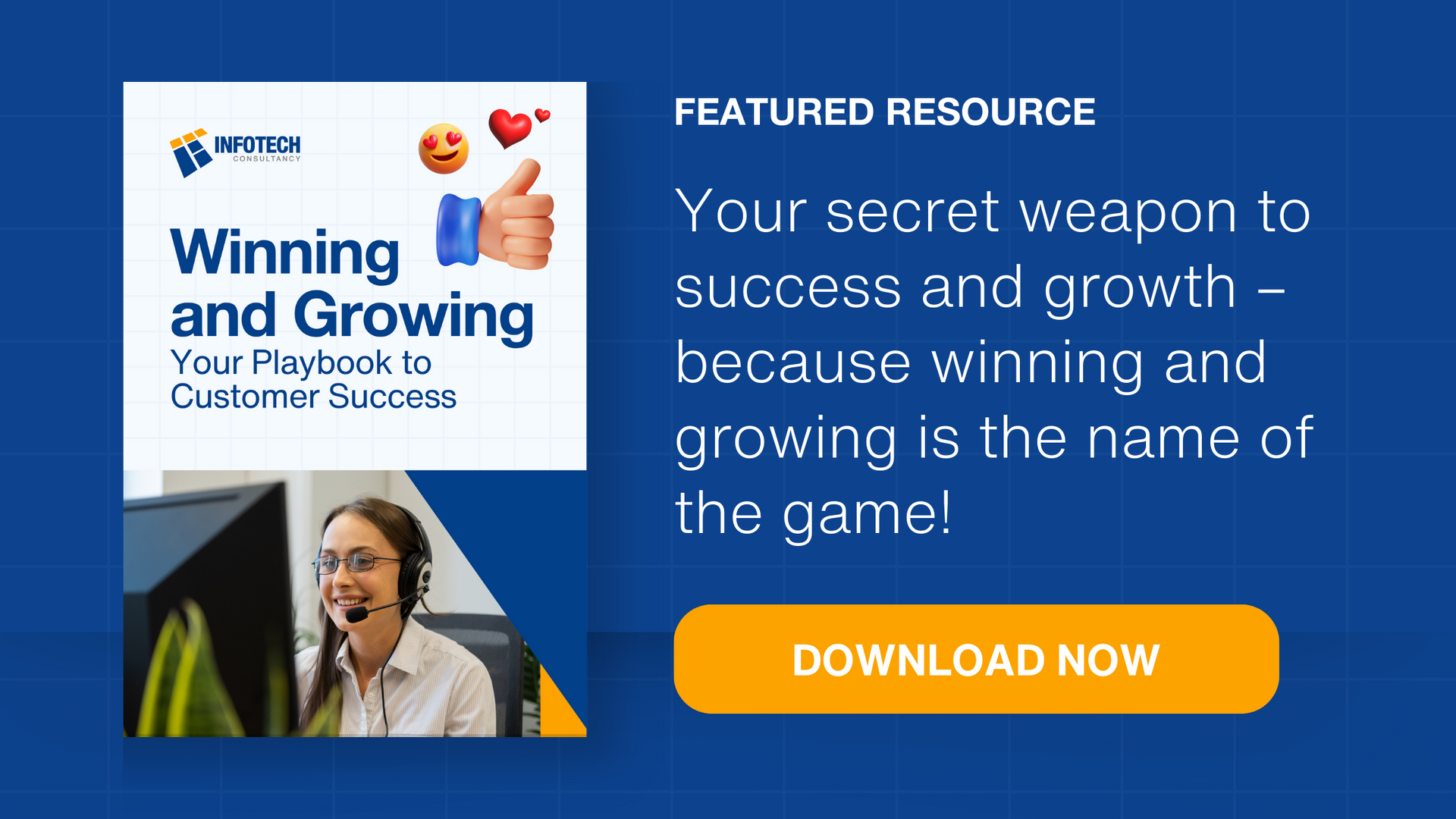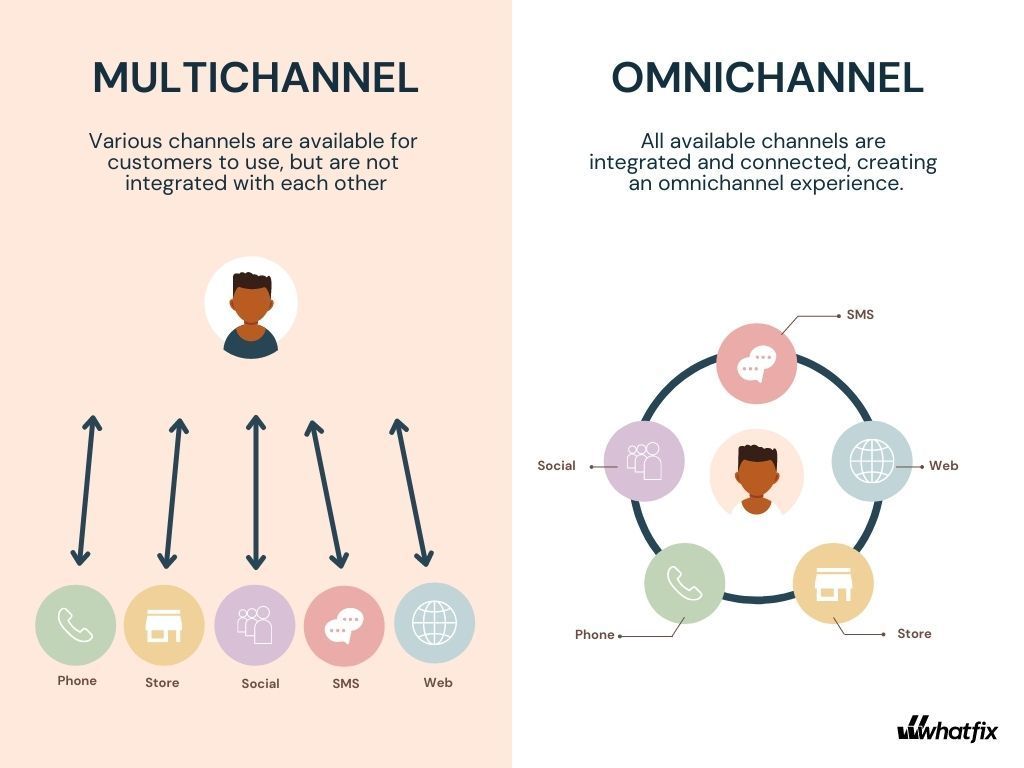Connecting the Dots: Crafting Cohesive Customer Experiences with Omnichannel
Modern consumers anticipate businesses to engage with them on their terms, and this is where the significance of adopting an omnichannel approach becomes apparent.
In this article, we'll explain the omnichannel strategy and provide you with tips on creating a seamless customer experience.
What is Omnichannel Strategy?
An omnichannel strategy is a way for businesses to create a seamless and integrated experience for customers across various channels. Instead of treating each platform or interaction separately, an omnichannel approach ensures a unified and consistent experience.
Consider a customer who starts browsing a product on a company's website. With an omnichannel strategy in place, they can seamlessly transition to a mobile app to continue their exploration. Later, if they visit a physical store, the staff can access their online preferences and purchase history, providing personalized assistance. Additionally, the customer may receive targeted promotions through email or social media based on their interactions across these different channels.
In this way, an omnichannel strategy connects the dots between online and offline interactions, creating a smoother and more cohesive experience for the customer, regardless of the channels they choose to engage with.
Omnichannel Vs. Multi-channel
Omnichannel and multichannel are both approaches that businesses use to engage with customers across various channels, but they differ in their level of integration and customer experience.
Multichannel refers to a strategy where a business interacts with customers through different channels, such as a physical store, website, mobile app, or social media. Each channel operates independently, providing customers with multiple touchpoints. For instance, a retail store might have a physical location, an online store, and a presence on social media, but these channels may not be fully integrated.
On the other hand, omnichannel is a more integrated approach. It not only involves multiple channels but also ensures a seamless and interconnected experience for the customer across these channels. The customer's journey is unified, and information is shared across platforms to provide a consistent experience.
Here's an example to illustrate the difference:
Imagine a customer who starts exploring products on a retail website (multichannel). They add items to their online cart but decide to visit a physical store to make the final purchase. In a multichannel setup, the online and offline experiences may not be connected. The customer might need to reiterate their preferences or start the shopping process anew in the store.
In an omnichannel scenario, however, the customer's online and offline experiences are interconnected. The products added to the online cart are visible in the store, and the staff can offer personalized assistance based on the customer's online interactions. Any promotions or loyalty points accumulated online are seamlessly applied in-store.
While multichannel provides various channels for customer interaction, omnichannel takes it a step further by integrating these channels for a cohesive and unified customer experience.
What Are The Benefits of the Omnichannel Approach?
Here are the several key benefits for businesses omnichannel approach offers:
Improved Customer Experience
According to a study by Aberdeen Group, companies with strong omnichannel customer engagement strategies retain, on average, 89% of their customers, compared to 33% for companies with weak omnichannel strategies. (via Internet Retailer)
Omnichannel provides a seamless and consistent experience across various channels, allowing customers to transition effortlessly between online and offline interactions.
Increased Customer Loyalty
According to Salesforce, 76% of customers expect consistent interactions wherever they engage (e.g., website, social media, mobile, in-person). An integrated and personalized omnichannel experience enhances customer loyalty. Customers are more likely to stick with a brand that provides a consistent and convenient experience.
Enhanced Sales and Revenue
Omnichannel strategies can lead to increased sales by providing customers with multiple pathways to purchase. Harvard Business Review reported that omnichannel customers spend 4% more in-store and 10% more online than single-channel customers.
Better Data and Insights
Omnichannel approaches allow businesses to gather and analyze data from various channels, providing a more comprehensive understanding of customer behaviour. A report by McKinsey suggests that companies using data-driven personalization can increase revenue by up to 15%.
Adaptability to Changing Consumer Behaviors
With the rise of online and mobile shopping, an omnichannel approach ensures that businesses can adapt to evolving consumer preferences. The Aberdeen Group (via Porch Group Media) reported that companies with strong omnichannel strategies achieve a 9.5% YoY growth, as opposed to a 3.4% decline for those with weak omnichannel strategies.
Tips for A Successful Omnichannel Strategy
Know Which Channel Your Customer Wants to Connect
Start by understanding your audience. Figure out where they spend their time, what they expect, and how those expectations have changed over the years. Engaging with them through their preferred channels will enable more meaningful interactions and strengthen your engagement strategy.
Consider the specific age groups interested in your brand, especially since millennials and Gen Z now play a big role. Don't rely on old surveys because things have shifted, especially due to the pandemic. Millennials and Gen Z, in particular, have different priorities. According to McKinsey, Gen Z doesn't stick to traditional channels and values a smooth overall experience.
Deliver Consistent Brand Voice
Maintain a uniform and easily recognizable brand voice in all your omnichannel efforts. This not only fosters trust with your audience but also ensures a cohesive connection with your brand across various platforms.
Starbucks is a solid example of delivering consistent brand messaging across channels. Wherever customers find Starbucks, they experience the same brand voice.
Hyper-personalize your messages
Basic personalization uses simple customer details like name, gender, location, and demographics to create marketing messages directly tailored to the individual.
Hyper-personalization, on the other hand, takes it a step further. Using real-time and behavioural data, employing AI, NLP, and automation you can craft highly relevant and individualized experiences. This method tracks live customer actions, like clicks and adding items to carts, to suggest products or services that match their preferences.
Netflix is a great example of a brand acing the hyper-personalization game. It provides super-customized recommendations and other features like:
- Notifications timed to the user’s time zone and regular log-in hours.
- Thumbnails for each show or movie align with the user’s viewing habits.
- Closure notifications gently remind users of unfinished shows.
- Feedback through likes and dislikes, shaping recommendations to suit the user’s taste, thanks to Netflix's smart algorithms.
Of Course, Measure!
In every strategy, it's crucial to assess your results. This involves establishing benchmarks to identify what's effective and where improvements can be made.
To identify the effectiveness of your omnichannel strategy, you can analyze key metrics like:
- Customer Lifetime Value (CLV) - Reflects the long-term value of customers engaging with your brand across various channels. A higher CLV suggests that your omnichannel strategy is fostering valuable, enduring relationships.
- Customer Satisfaction (CSAT) - Measures customer happiness by collecting feedback across channels and determining the percentage of satisfied customers.
- Net Promoter Score (NPS) - Evaluates loyalty by asking customers how likely they are to recommend your brand.
- Conversion Rate by Channel - Illustrates which channels most effectively lead customers to take desired actions. Use this data to allocate resources strategically.
- Customer Retention Rate - Indicates how well your omnichannel efforts retain customers over time. A higher retention rate signals that customers find value and consistency across channels.
These metrics offer insights into the performance of your omnichannel strategy. Choose metrics based on your specific goals and industry for a more accurate assessment.
Getting Started With Omnichannel
Creating an omnichannel customer experience might seem overwhelming, requiring extensive research, analysis, and testing. But done right, omnichannel can unlock exciting possibilities for enhanced customer engagement, satisfaction, and loyalty.
At Infotech, we help companies shape their omnichannel journey by assisting in technology selection, formulating strategies, and evaluating the effectiveness of their current approach. Trusted by companies like Optus, we have successfully realigned their strategy and implemented an approach that significantly improved their customer experience.
To learn how we can support your omnichannel strategy, fill out our contact form, and we'll gladly assist you. Pro tip: Download our playbook, designed not only for omnichannel marketing but also for an overall customer success strategy.








